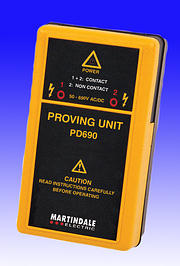I was intending to take off a spur from the mains cable in my garage to provide extra plug sockets. I turned off the power to the garage at the main consumer unit by switching off the trip switch for the garage. On checking in the garage all lights were not working and all appliances (e.g. freezer and fridge) had turned off. I assumed that power to the garage had therefore been disconnected. I cut through the cable, fortunately with a rubber handled pair of cutters, only to discover that power was still flowing and tripped the RCD in the consumer unit. I subsequently discovered that there is an isolator switch for the garage power supply (new build house and had not previously seen it) which of course I had not used. Four questions:
1.Should the power have been disconnected even if I had not used the isolator switch, as I had supposedly turned it off at the consumer unit?
2.Does this means that the polarities are wrong at the consumer unit?
3.If answer 2 is “Yes”, would having turned the isolator off have made any difference?
4.Does an isolator switch interrupt both live and neutral connection?
Any advice would be greatly appreciated
1.Should the power have been disconnected even if I had not used the isolator switch, as I had supposedly turned it off at the consumer unit?
2.Does this means that the polarities are wrong at the consumer unit?
3.If answer 2 is “Yes”, would having turned the isolator off have made any difference?
4.Does an isolator switch interrupt both live and neutral connection?
Any advice would be greatly appreciated







